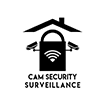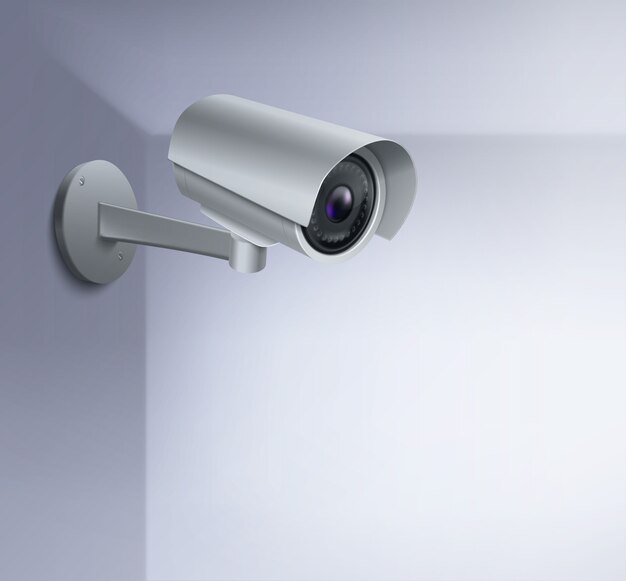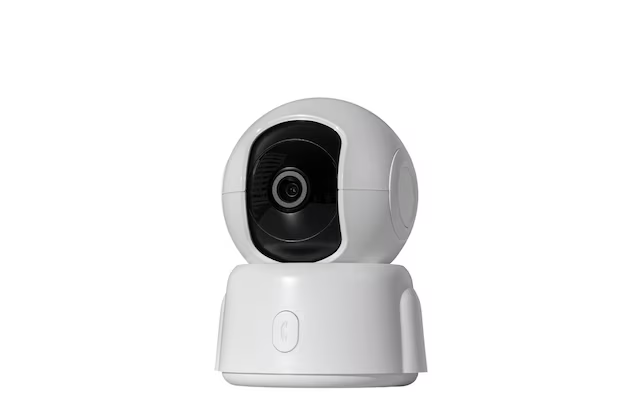In today’s world, security is a top priority, whether you’re protecting your home, office, or business. With the rise in crime rates and the growing need for surveillance, it has never been more important to have a reliable security camera system in place. Among the most popular types of security cameras are dome cameras and bullet cameras. But what makes them different, and which one is right for you?
In this article, we’ll dive deep into the key differences between dome and bullet cameras, exploring their design, installation, performance, and specific advantages. We’ll also provide practical tips on how to choose the right security camera for your unique needs.
Before we jump into the differences, let’s first define what dome cameras and bullet cameras are.
- Dome Cameras: Dome cameras are typically ceiling-mounted surveillance cameras that are housed in a small, dome-shaped casing. They are known for their discreet design and wide-angle lenses, offering a 360-degree field of view. Dome cameras are often used for indoor security, but some models are designed for outdoor use as well. Their sleek and subtle design makes them a great choice when you don’t want the camera to stand out too much.
- Bullet Cameras: Bullet cameras, on the other hand, are long, cylindrical cameras that are usually mounted on walls or ceilings. These cameras get their name because they resemble bullets or small cylinders, making them easily recognizable. Bullet cameras are known for their high-definition image quality and are typically used for outdoor surveillance, although they can also be used indoors. The primary advantage of bullet cameras is their visibility—they tend to be more noticeable than dome cameras, which can sometimes act as a deterrent to potential intruders.
1. Design and Aesthetic Appeal
The design of your security camera matters for both aesthetic and practical reasons. The visual appearance can affect how your camera blends in with its surroundings and the level of deterrence it offers.
- Dome Cameras: The compact, rounded shape of dome cameras makes them ideal for more discreet installations. Their low profile means they can be placed almost anywhere without drawing too much attention. For businesses or homes that prioritize the aesthetic appeal of their space, dome cameras offer a sleek, non-invasive design. This is particularly helpful for dome cameras for home security system indianapolis where you may want the camera to blend in with the environment.
- Bullet Cameras: Bullet cameras, with their distinctive cylindrical shape, are often considered more noticeable. While this could be seen as a disadvantage in some cases, the visibility of bullet cameras can actually work in your favor when you need to create a deterrent effect. Their size and prominent design can signal to potential intruders that they are under surveillance, which can often help prevent crime before it happens. Their visibility also makes them an excellent choice for bullet cameras for surveillance where you need to ensure your property is being actively monitored.
2. Coverage Area and Field of View
When choosing between dome and bullet cameras, it’s essential to understand how the camera’s design affects its field of view and coverage area.
- Dome Cameras: Dome cameras usually feature a wide-angle lens, providing a 360-degree field of view. This means that a single dome camera can cover a large area, making them an excellent choice for monitoring indoor spaces such as hallways, entrances, or open areas. The panoramic view ensures that you get a broader perspective of the environment, which can help capture more activity without needing multiple cameras. Dome cameras for home security often work great for monitoring multiple entry points and wide interior spaces.
- Bullet Cameras: Bullet cameras, in contrast, have a narrower field of view but are equipped with high-powered zoom lenses. This means that while bullet cameras may cover a more specific area, their ability to zoom in on subjects makes them ideal for long-distance surveillance. For example, they work well for monitoring large areas, building perimeters, or driveways. Outdoor bullet camera installation is highly recommended for properties with large outdoor areas where you need to focus on specific points, like gates or entryways.
3. Installation and Mounting
The ease of installation and the placement flexibility of security cameras is another important factor to consider. Here’s how dome and bullet cameras compare:
- Dome Cameras: Dome cameras are typically mounted on ceilings, making them more discreet and less intrusive. Because they don’t have to be aimed directly at a specific area, they can provide a more wide-reaching field of view. However, installing dome cameras can sometimes be trickier due to their ceiling mount, which may require more precise positioning. Dome camera installation can often be more involved, but the discreet setup is ideal for maintaining a clean aesthetic.
- Bullet Cameras: Bullet cameras are usually wall-mounted or ceiling-mounted, and their adjustable mounts make them highly flexible. They can be directed towards specific areas, offering a more targeted approach to surveillance. Their adjustable nature makes bullet cameras easier to position at the desired angle, though they may be more noticeable due to their larger size. Outdoor bullet camera installation is common for places that require enhanced visibility.
4. Performance in Different Environments
Both types of cameras can perform well in different conditions, but they each have their own strengths when it comes to specific environments.
- Dome Cameras: Dome cameras are typically more durable and vandal-resistant. Many models are built with tamper-proof casings that make it difficult for criminals to alter or damage the camera. This makes dome cameras ideal for indoor use in areas where they may be exposed to harsh environments, such as near doors or high-traffic spaces. Some dome cameras are also designed for outdoor use and come with weatherproof housings that can withstand rain, dust, and snow.
- Bullet Cameras: Bullet cameras are often designed for outdoor use and are built with weatherproof casings to handle harsh conditions. Their rugged design makes them more resilient to extreme weather, including rain, snow, and extreme temperatures. Bullet cameras are perfect for monitoring outdoor perimeters, driveways, and areas that are vulnerable to intruders. Outdoor bullet camera installation ensures that you are well-prepared for any weather situation.
5. Night Vision and Low-Light Performance
Both types of cameras are often equipped with infrared (IR) technology to provide visibility in low-light conditions. However, the performance of dome and bullet cameras in low-light environments can vary.
- Dome Cameras: Dome cameras generally have better night vision because of their wide-angle lenses, which can capture a larger amount of light and provide a more comprehensive view of a given area. Additionally, many dome cameras come with advanced infrared technology to ensure clear footage even in total darkness. Dome cameras for home security are often favored for their ability to provide surveillance in low-light conditions, especially for indoor spaces.
- Bullet Cameras: Bullet cameras are also equipped with infrared sensors but tend to perform better when focused on specific objects or areas. While they might not capture as wide a view as dome cameras, their zoom capabilities can help in improving nighttime clarity when monitoring a smaller area. This is ideal when using bullet cameras for surveillance in areas where you want to focus on specific targets.
6. Cost Considerations
When it comes to cost, the price of dome and bullet cameras can vary based on the brand, features, and quality.
- Dome Cameras: On average, dome cameras tend to be slightly more affordable than bullet cameras, especially when you are purchasing basic models. However, if you’re looking for advanced dome cameras with high-definition video quality and additional features (like motion detection or cloud storage), the price can rise. Dome cameras for home security are often more budget-friendly, making them a popular option for residential installations.
- Bullet Cameras: Bullet cameras are generally more expensive, especially if you opt for high-end models with zoom functionality or HD capabilities. However, their durability and specific focus may justify the added cost, particularly if you’re setting up an outdoor surveillance system. Bullet cameras are ideal for long-range monitoring and larger, open areas.
7. Privacy Concerns
One area where dome cameras have a clear advantage over bullet cameras is in terms of privacy.
- Dome Cameras: Since dome cameras are less visible and often placed in discreet locations, they tend to raise fewer privacy concerns. Their subtle design allows for continuous surveillance without drawing attention, which can be crucial in situations where privacy is important, such as in businesses or homes where customers or family members might feel uncomfortable with overt surveillance.
- Bullet Cameras: Due to their larger size and more obvious design, bullet cameras may raise privacy issues in some situations. Because they are placed in more visible areas, people may feel uneasy about being watched by an obvious security device. This may be something to consider when setting up cameras in public or semi-public spaces, such as near entrances or windows.
When deciding between dome cameras and bullet cameras, consider the following:
- Dome Cameras: Choose dome cameras for home security if you need a discreet, wide-coverage solution for indoor security or if you want a camera that blends into the environment. Dome cameras are great for multi-camera setups where wide coverage is essential, such as in retail stores, office buildings, or high-traffic areas.
- Bullet Cameras: Opt for bullet cameras for surveillance if you need long-range surveillance and visibility. Bullet cameras are ideal for outdoor security, especially for monitoring driveways, building perimeters, and large open areas. Their rugged design makes them perfect for environments where weather resistance is crucial. Outdoor bullet camera installation is commonly used in large open spaces.
Conclusion
The difference between dome cameras and bullet cameras boils down to design preferences, intended usage, and specific features. While dome cameras offer a discreet design and broad coverage, bullet cameras provide more focused, long-range surveillance with a robust build ideal for outdoor use. Understanding your security needs, the environment you’re securing, and your privacy requirements will help you make the best decision for your security system.
Whether you opt for a dome camera or a bullet camera, both options provide critical advantages when properly installed and strategically placed. Choosing the right one for your home, business, or industrial property will ensure the safety and security of your space, giving you peace of mind no matter where you are.
Contact us today if you need help with selecting or installing security cameras for your property, don’t hesitate to reach out! Our expert team is ready to assist you with all your surveillance needs. Get in touch with us now for personalized recommendations and professional service!
FAQs
What are the main differences between dome and bullet cameras?
Dome cameras offer a discreet design with a wide field of view, perfect for indoor spaces. Bullet cameras provide focused, long-range surveillance, making them ideal for outdoor areas.Can I install bullet cameras outdoors?
Yes, bullet cameras are specifically designed for outdoor surveillance and are built with weatherproof casings to withstand harsh environmental conditions.Are dome cameras suitable for home security?
Absolutely! Dome cameras are a great choice for home security as they offer a subtle design and a wide-angle view, ensuring comprehensive monitoring without drawing attention.Which camera is better for surveillance in large areas?
Bullet cameras are ideal for long-range surveillance, especially in large areas like driveways or building perimeters, thanks to their adjustable zoom and focus capabilities.How do I choose between a dome camera and a bullet camera for my property?
If you need discreet coverage and broad monitoring, go for dome cameras. For long-distance, visible surveillance in outdoor environments, bullet cameras are the better choice.










